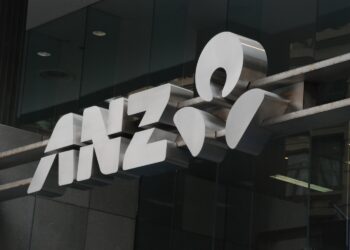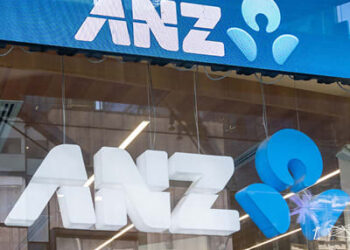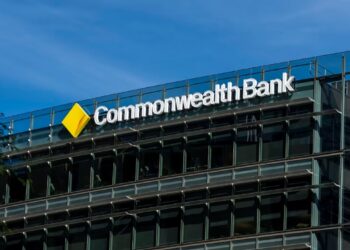The GFC is the one phenomenon that has affected financial planners, their clients and investment managers in Australia like never before.
Fund freezes, corporate collapses, active versus passive managers, commissions under scrutiny, multiple government inquiries and record superannuation fund declines: it all happened between 2007 and 2009.
The effects of the meltdown have been so far reaching that business models across the entire financial services industry have been called into question.
It is amazing, but the seeds of the GFC had already been sown when the world economy was recovering after the dotcom bubble was pricked in 2000.
By the end of 2001, then-US Federal Reserve chairman Alan Greenspan cut interest rates from 6 per cent to 1.75 per cent and eventually left them at an unprecedented 1 per cent in 2003.
Many commentators have criticised Greenspan amid the recent downturn for leaving rates so low on the grounds that they induced borrowers to take out near interest-free loans that drove up house prices and fuelled an economic boom that created a period of excess that would come to a crashing halt.
But in turn, US banks were the ones that had lax lending policies and recklessly lent to borrowers who were unlikely to make repayments (hence sub-prime) and concocted complex structured products, namely collateralised debt obligations (CDO), that pushed some institutions to near insolvency.
The first signs of the sub-prime crisis emerged during July 2006, in Kirkland, a lakefront city of around 50,000 residents near Lake Washington. Sub-prime lender Merit Financial abruptly filed for bankruptcy, citing a slowdown in business and sales.
A number of other instances in early 2007 signalled all was not well in the US economy. More sub-prime lenders suddenly went bust and investment bank Bear Stearns (now owned by JPMorgan Chase) froze redemptions from a CDO-packed hedge fund.
The sub-prime meltdown claimed its first Australian victim in July 2007. Sydney-based Basis Capital froze redemptions and warned of substantial losses on several of its funds following significant disruptions on global credit markets.
The Fed, chaired by Ben Bernanke since 1 February 2006, started rapidly cutting interest rates in the second half of 2007.
In January 2008, the share price of Gold Coast-based fund manager MFS plunged, leaving the company facing collapse.
As weeks passed, Bear Stearns became engulfed by electrifying speculation that it would buckle under a liquidity crunch. Bernanke and the Fed drew on powers unused since the Great Depression to bail out the investment bank on 14 March and sell it to JPMorgan two days later.
Stockbroker Opes Prime collapsed later in the month and in April, Lift Capital was placed in administration, leaving headaches for advisers and clients who used those firms as their trading facility.
In ensuing months, global financial markets were hit by dramatic volatility. On one hand, the price of oil and some other commodities soared to record highs, while giants in the global financial sector posted massive losses on bets tied to the US sub-prime market.
By September, the sub-prime crisis began its steep climax with the US government on 7 September being forced to rescue Fannie Mae and Freddie Mac, which own or guarantee about half the $13 trillion US mortgage market.
Just two days later, global securities firm Merrill Lynch sold itself to Bank of America following massive losses and on 15 September – the event that would mark the start of the GFC – Lehman Brothers Holdings filed for Chapter 11 bankruptcy.
A day later, AIG was saved by the US government. Banks around the world, including in the UK, Belgium and Iceland, were getting bailed out or nationalised. US, Australian, Canadian and French regulators temporarily banned short-selling on financial stocks.
US Treasury Secretary Hank Paulson was forced to do the unthinkable, ask the government for $761 billion (US$700 billion) to siphon toxic assets from banks, which eventually passed and simply turned out to be a big bailout fund.
Despite the unprecedented series of events, Berkshire Hathaway’s Warren Buffett and Commonwealth Bank of Australia (CBA) chief executive Ralph Norris were two industry giants who seemed to make use of the opportunities presented by the GFC.
Buffett bought massive stakes in huge industrial conglomerate General Electric and bank holding company Goldman Sachs in late September/October, while CBA agreed to buy Halifax Bank of Scotland’s BankWest for $2.1 billion on 8 October.
Despite CBA flexing its muscle to buy assets in an unimaginable downturn, Australian consumers became so worried about their savings that the federal government decided to guarantee all Australian bank deposits and term wholesale funding for three years following a crisis meeting in October. The move caused a massive headache for the wealth management industry, with fund managers being forced to halt redemptions to protect underlying assets and preventing investors from accessing billions of dollars of their money.
The GFC became so bad by November that the S&P/ASX 200 tanked below 4000 points as major global institutions continued receiving state aid, while the International Monetary Fund had to bail out whole countries.
Sydney-based Allco Finance Group, which once tried to lead a consortium to purchase airliner Qantas, collapsed on 4 November.
A day later in the US, Democrat leader Barack Obama defeated his Republican rival John McCain to become the first US president of African-American descent.
But it did nothing to stop stock markets continuing their slide well into the end of the year as world trade went into seizure.
In December, Bernard Madoff was arrested for running a $70 billion Ponzi scheme. He was later sentenced to 150 years in prison.
Another headache hit the Australian wealth management industry, with many hedge funds, including HFA’s diversified investments, Octane and Octane Fund Series 2, suspending redemptions due to deteriorating liquidity in underlying investments.
As 2009 kicked off, there was no relief in sight from the GFC as Citi and Bank of America floundered and required more taxpayer bailouts.
Arguably the biggest Australian victim emerged in January: voluntary administrators were appointed to Queensland-based advisory group Storm Financial.
A month later, an inquiry was set up to report on the issues associated with the collapse of firms including Storm and Opes.
Job losses were mounting in Australia and the economy was shrinking, pressuring the government to announce a $42 billion economic stimulus package in February, just as the US government announced its $856 billion stimulus.
When debate ensued over whether the global economy would continue its disintegration, like thunder on March 9 and 10, stock markets experienced their steepest rally since the Great Depression, leaving Bernanke to coin the phrase “green shoots”.
However, it was already too late for several Australian companies, with Timbercorp failing in April, followed by Great Southern in May – both collapses sparking another inquiry.
At the time of writing, it seems the world financial system has stabilised after being put on the brink. Remarkably, Australian banks appear to have emerged from the GFC unscathed.
But many market observers argue nothing is certain. Talk of another financial crisis is already underway on the basis that the US dollar is crumbling, while many advanced economies are mired in record budget deficits with banks still reliant on taxpayer aid.
Still, the G20 is taking steps to restore the global economy and prevent a rerun of the GFC by strengthening prudential regulation, requiring banks to hold more capital during good times and ensuring compensation policies support financial stability.
Unfortunately, it is impossible to fix the underlying reasons for the crisis in the first place: greed and hubris.







